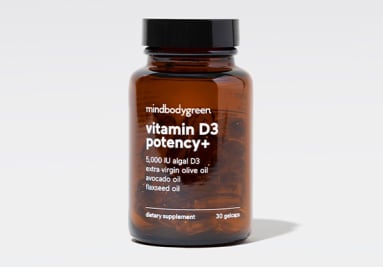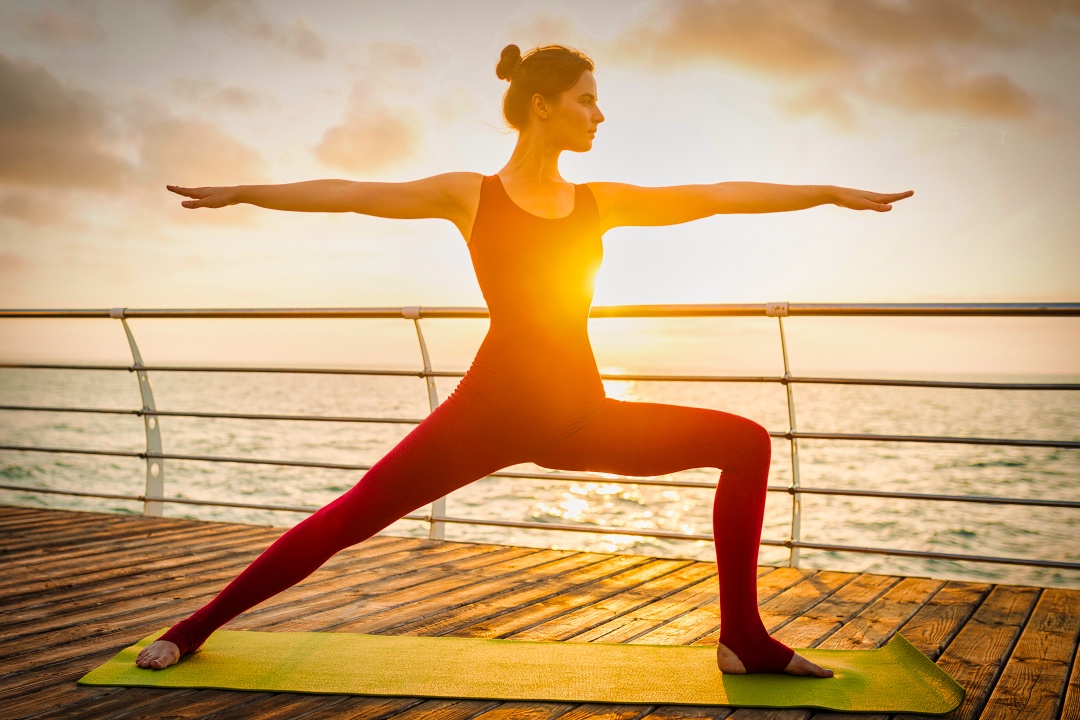I'm A Derm Who Studies Vitamin D & Skin Cancer — Here's What To Know
Getting sunshine and spending time outdoors is important for your mental health. However, you need to be smart about how you’re spending time in that sun


mbg Beauty Director
mbg Beauty Director
Alexandra Engler is the beauty director at mindbodygreen and host of the beauty podcast Clean Beauty School. Previously, she's held beauty roles at Harper's Bazaar, Marie Claire, SELF, and Cosmopolitan; her byline has appeared in Esquire, Sports Illustrated, and Allure.com.
June 13, 2023 Getting sunshine and spending time outdoors is important for your mental health. However, you need to be smart about how you’re spending time in that sun. We believe in having a comprehensive approach to sun care, one that involves not only SPF, but utilizing protective accessories, finding shade when possible, and avoiding spending too much time in peak sunshine. And that’s what today’s episode of Clean Beauty School is about. I’m joined with board-certified dermatologist Shasa Hu, M.D., professor at the University of Miami and Cosmetic Director Skin of Color Division. She specializes in skin cancer detection, caring for skin of color, as well as research concerning vitamin D and the sun.
Advertisement
This ad is displayed using third party content and we do not control its accessibility features.
Throughout the episode we discuss the myth that SPF is “toxic”, how to detect early signs of skin cancer, and what you can do to reverse sun damage from the past. She also shares her best advice on how to spend time in the sun—which she says is all about “balance.” Ingest your vitamin D
Vitamin D—a vitamin and hormone necessary for several functions in the body—is often called “the sunshine vitamin,” as vitamin D3 is synthesized in our skin via UVB sunlight exposure.
However getting adequate amounts of vitamin D via the sun is challenging. First and foremost, the amount of sunshine required to reach sufficiency isn’t an exact science and varies greatly depending on a person’s individual makeup, body composition, and environment.
“There’s this myth that you cannot use sunscreen because if you're using sunscreen, you're gonna become vitamin D deficient,” says Hu. “But the reality is that there are much safer and more reliable ways to take vitamin D than go get sun burnt and potentially get skin cancer.”
And even if you spend all day in the sun, without sunscreen, there’s no guarantee that you’d reach sufficient levels. Hu points to studies showing that even folks who are exposed to direct sunlight all day, such as farmers, still struggle with vitamin D deficiency1. In fact, most Americans struggle with deficiency or insufficiency2.
In addition, our ability to synthesize vitamin D via the skin declines with age. “Our skin's capacity to convert vitamin D from sun exposure declines over age, but our GI absorption stays relatively stable,” she says.
Check out our favorite vitamin D supplements here.
Advertisement
This ad is displayed using third party content and we do not control its accessibility features.
Find the right sunscreen
One big hurdle in getting people to wear SPF is that the ingredients can be irritating—or just unpleasant to wear. “Choosing the right sunscreen can be difficult for patients who have sensitive skin, acne prone skin, or problem-prone skin, like rosacea,” she says. “For people like this, I like to suggest zinc oxide and titanium dioxide sunscreens because they’re less irritating than the chemical ingredients.”
Mineral sunscreens, however, have a notorious draw-back of having a white cast. The fix? Find one that’s tinted, which Hu prefers as it can help protect skin from not only UVA and UVB, but also visible light.
“There’s some data that shows that visible light—which includes blue light that we’re getting from the screen—can contribute to pigmentation in darker skin tones,” she says. “So you need to use a really comprehensive visible light blocker to minimize that. There are very few visible light blockers out there, but pigment grade titanium dioxide and zinc oxide are two.”
Check out our favorite mineral sunscreens and tinted sunscreens here.
It’s not just sunscreen.
Sunscreen, while helpful, isn’t perfect protection against damage. So applying SPF isn’t a hall pass to sunbathe all day. Rather, proper sun care requires a more balanced approach.
“We really like to encourage people to be comprehensive and think big. If you’re outdoors being active, wear your sunglasses and UFP shirts when biking or rash guards when you’re spending all day in the water,” she says. “But then it’s also about picking the hours you spend in the day wisely. Choose an earlier tee-time or start the bike ride earlier, so you’re spending less time in peak hours.”
For more sun care tips, tune in:

 BigThink
BigThink 































